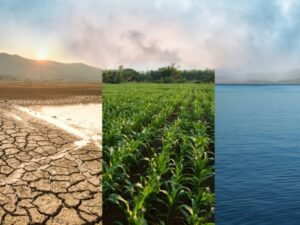South Africa breathes easy as we have come off of a long bout of the favourable La Nina weather pattern. While El Nino usually brings some grief, we have been lucky as the southern African region has had good rainfall despite the weather system’s emergence. As a country, we need to know how best to deal with these climate patterns.
Failure to plan is planning to fail
Just mentioning El Nino can dampen a conversation in the agriculture community, and with the effects so widely known and the predictions so accurate there is no need for reactive measures. Beth Bechdol, deputy director-general of the Food and Agriculture Organization (FAO) emphasises a proactive approach where “early action can save lives and safeguard livelihoods by preventing damage to crops, livestock, lands, water, and infrastructure.”What needs to be done
Beth Bechdol has suggested four key tasks to ensure we are correctly prepared for the usual shifting weather patterns and broader climate change. International collaboration including among climate scientists and development and humanitarian actors to address the transboundary nature of climate change; Targeted investments in agriculture, particularly in early warning systems to be able to translate forecasts into actionable measures; Scaled-up action including emergency agriculture aid ahead of and during crises to boost local food production; and Increased funding to enhance anticipatory action and build climate resilience. A case studyUsing modelling based on previous El Niño-driven weather patterns, FAO acted swiftly to avert the worst of its effects in 2023-2024, launching together with governments and partners anticipatory actions in 23 countries at risk.
Examples of action on the ground included: repairing or constructing irrigation systems and animal health interventions to address potential drought-induced disease outbreaks; repairing riverbanks, rehabilitating canals, and providing cash transfers ahead of floods so families can make their own choices about meeting their needs.In Central America, for example, the timely distribution of drought-tolerant and short-cycle crop seeds has helped each family receive assistance to produce about 60 kg of vegetables every two months, to mitigate the impact of El Niño-induced drought on local food production. Likewise, in Somalia, repairing around 4,600 metres of riverbank breakage points along the Shabelle River has protected almost 40,000 hectares of cropland from expected floods. According to FAO assessments, for every $1 invested in anticipatory action, it creates a return for farming families of more than $7 in avoided losses and added benefits. The timeliness and success of FAO’s anticipatory actions during this El Niño event are largely due to the extensive groundwork conducted by FAO over several years to enhance anticipation and preparedness capacities within its country offices and among key partners.










